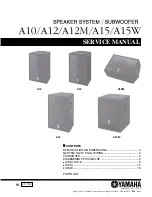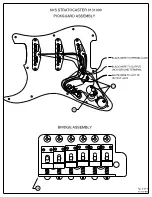
5
Inserting the Bridge and Endpins
The strings are held in place at the bridge by a small notch at
the front of each bridge pin. It is important that the pin slot
be facing straight forward so the string is properly aligned on
the bridge saddle. Make sure that the ball end of the string is
pulled up tightly against the inside of the top before inserting
the bridge pin.
Too often bridge pins are hammered in so hard that they
become wedged and split the bridge. After inserting the string
and pin, a solid push with your thumb is all that is needed.
The endpin is tapered and held into place by friction. It is not
glued in. For proper insertion, hold endpin between thumb
and forefinger, twist slightly while carefully pushing the endpin
into the bottom end of the guitar.
Do not use force. Do not
hammer or tap endpin with any object; doing so may
cause the wood to crack on the bottom end of the
guitar.
The endpin should be checked frequently to make
sure it has not worked loose.
Strings
Different styles of playing demand different types of strings;
but, unless you are a specialist in a particular style, your
guitar came with strings that will normally give the best
results. You may want to make your guitar easier to play
and use one of our lighter string sets, but your bridge saddle
and neck may have to be adjusted to prevent fret buzz. A
classical guitar has much lighter bracing than the usual
steel-string acoustic guitar, and using steel strings on it
will literally pull it apart.
Содержание 0-45S Stephen Stills
Страница 1: ......






































